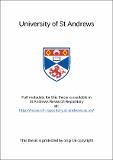Files in this item
Theoretical and practical geological remote sensing in an arid environment : Landsat MSS imagery of the Central Zone of the Damara Orogen, Namibia
Item metadata
| dc.contributor.advisor | Oliver, Grahame | |
| dc.contributor.author | Lord, Jeffrey | |
| dc.coverage.spatial | 160 p. | en_US |
| dc.date.accessioned | 2021-01-06T17:26:49Z | |
| dc.date.available | 2021-01-06T17:26:49Z | |
| dc.date.issued | 1995-07-07 | |
| dc.identifier.uri | https://hdl.handle.net/10023/21229 | |
| dc.description.abstract | Two adjacent Landsat Multispectral Scanner (MSS) scenes have been digitally processed and enhanced to maximise the display of geological information contained within imagery covering the western portion of the Central Zone of the Damara Orogen, Namibia. Structural information has been obtained from the spatial component of image information through the compilation of lineament maps. Linear features have been objectively enhanced through the generation of the first principal component image and by convolution filtering. By means of visual interpretation, linear features have then been mapped, then digitised and subjected to computer analysis to establish any orientation trends. Positive topographic lineaments, which represent the Etendeka regional dolerite dyke swarm (130-120 Ma), show a strong north-northeast trend and are closely associated with the splitting of Gondwana and the formation of the Southern Atlantic Ocean. Negative topographic lineaments are believed to represent sinistral strike-slip faults and show a strong northwest trend. They are believed to have formed under brittle conditions at the end of the Damaran Orogen. Tonal lineaments, caused by linear lithological horizons, either side of parallel fold axes, show a dominant northeast trend, and are believed to have formed during either compressional or extensional conditions during the main Damaran deformation event. A number of regional photolineaments are also recognisable from the Landsat imagery. A remotely-sensed geology map has also been produced using both the spatial and spectral components of image information. Mappable lithological units have been established in a previously mapped test area, and these units have been extrapolated further afield to produce a regional geology map of the western portion of the Central Zone of the Damara Orogen. Comparison with published geology maps of the same area shows that the procedure proves generally effective and new outcrops of basement rocks have been recognised in the area to the west of the Namibfontein Dome. However, the limited spectral resolution of the imagery is high-lighted by the inability to resolve between the Rossing, Chuos and Karibib Formations. The study area proves to be well-suited to geological remote sensing using Landsat MSS imagery because of the excellent rock exposure in the region, the lack of vegetation, and the wide variety of lithologies which appear spectrally distinct from one another on digitally-enhanced imagery. The procedure provides a low-cost, effective means of geological reconnaissance which is well-suited to remote and inaccessible areas. | en_US |
| dc.language.iso | en | en_US |
| dc.publisher | University of St Andrews | |
| dc.subject.lcc | QE339.N2L7 | |
| dc.title | Theoretical and practical geological remote sensing in an arid environment : Landsat MSS imagery of the Central Zone of the Damara Orogen, Namibia | en_US |
| dc.type | Thesis | en_US |
| dc.type.qualificationlevel | Doctoral | en_US |
| dc.type.qualificationname | MPhil Master of Philosophy | en_US |
| dc.publisher.institution | The University of St Andrews | en_US |
This item appears in the following Collection(s)
Items in the St Andrews Research Repository are protected by copyright, with all rights reserved, unless otherwise indicated.

